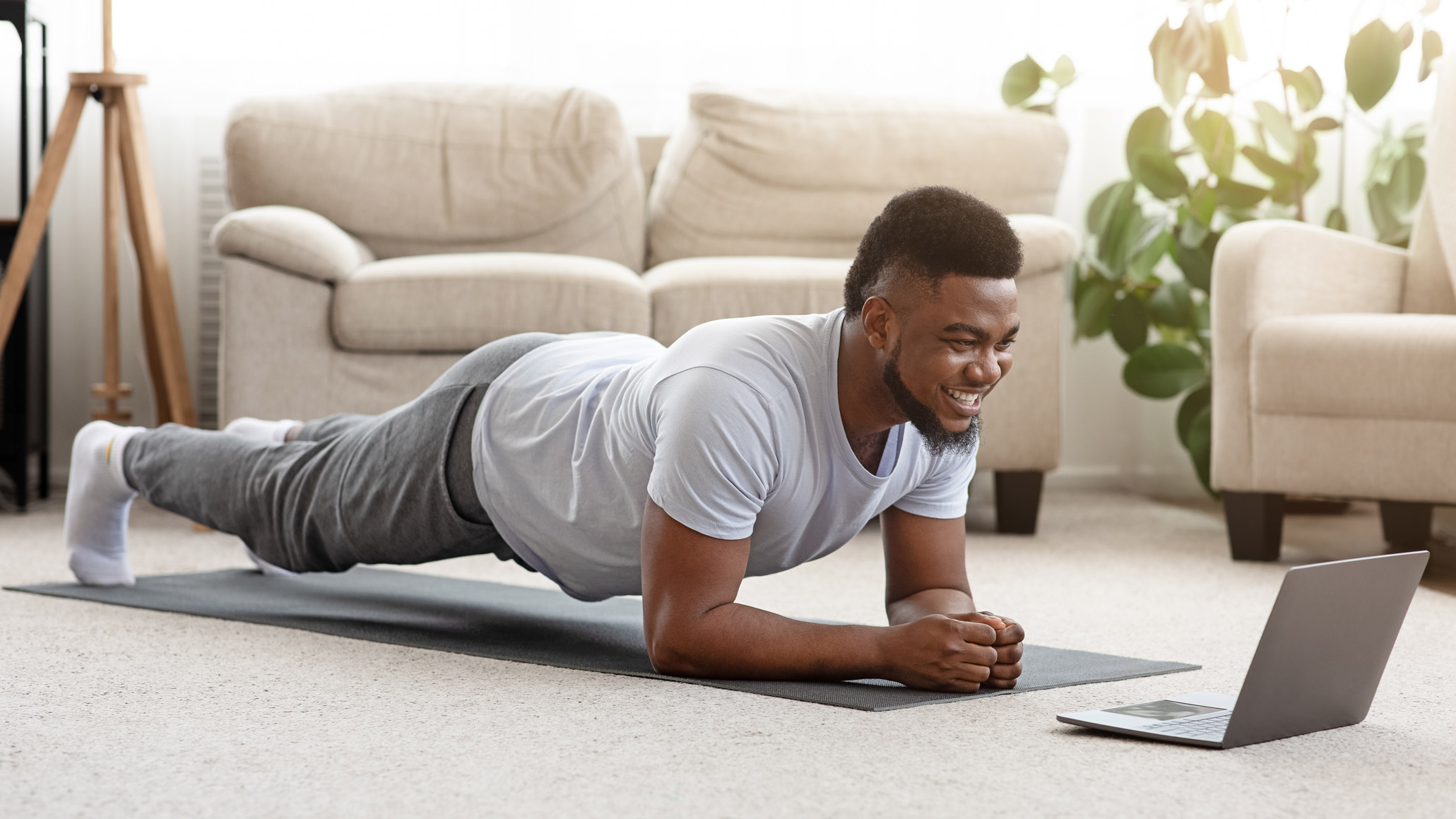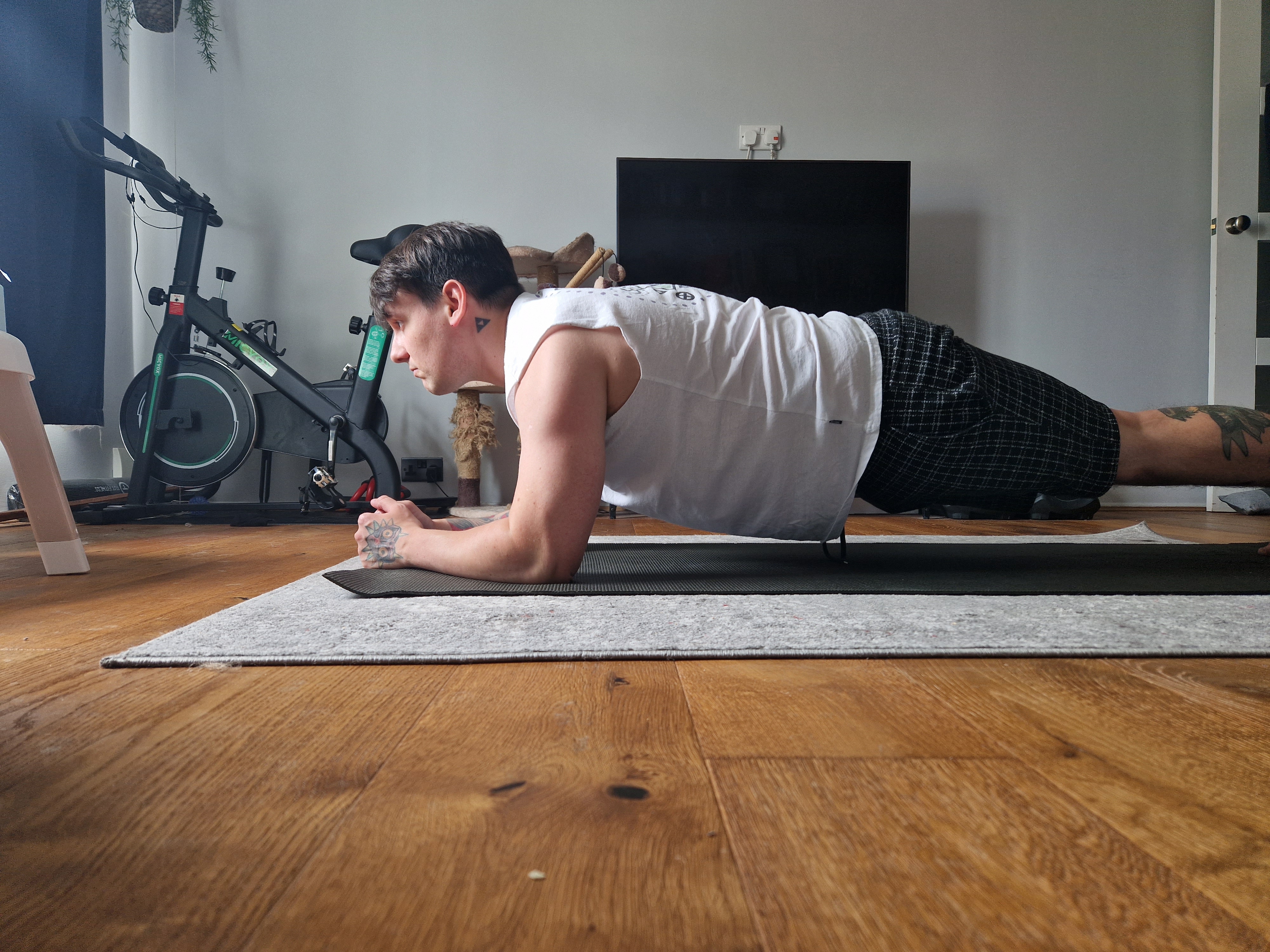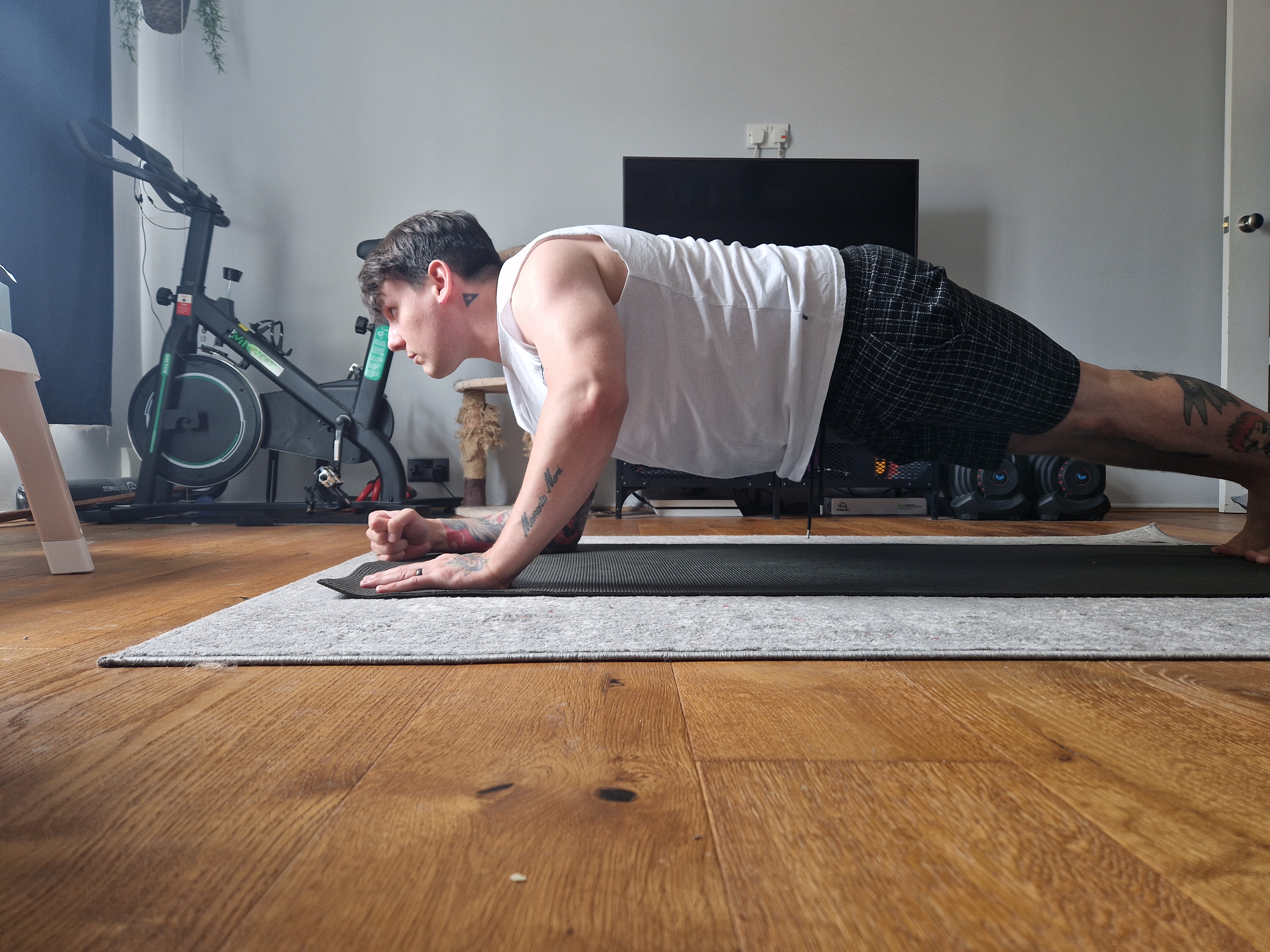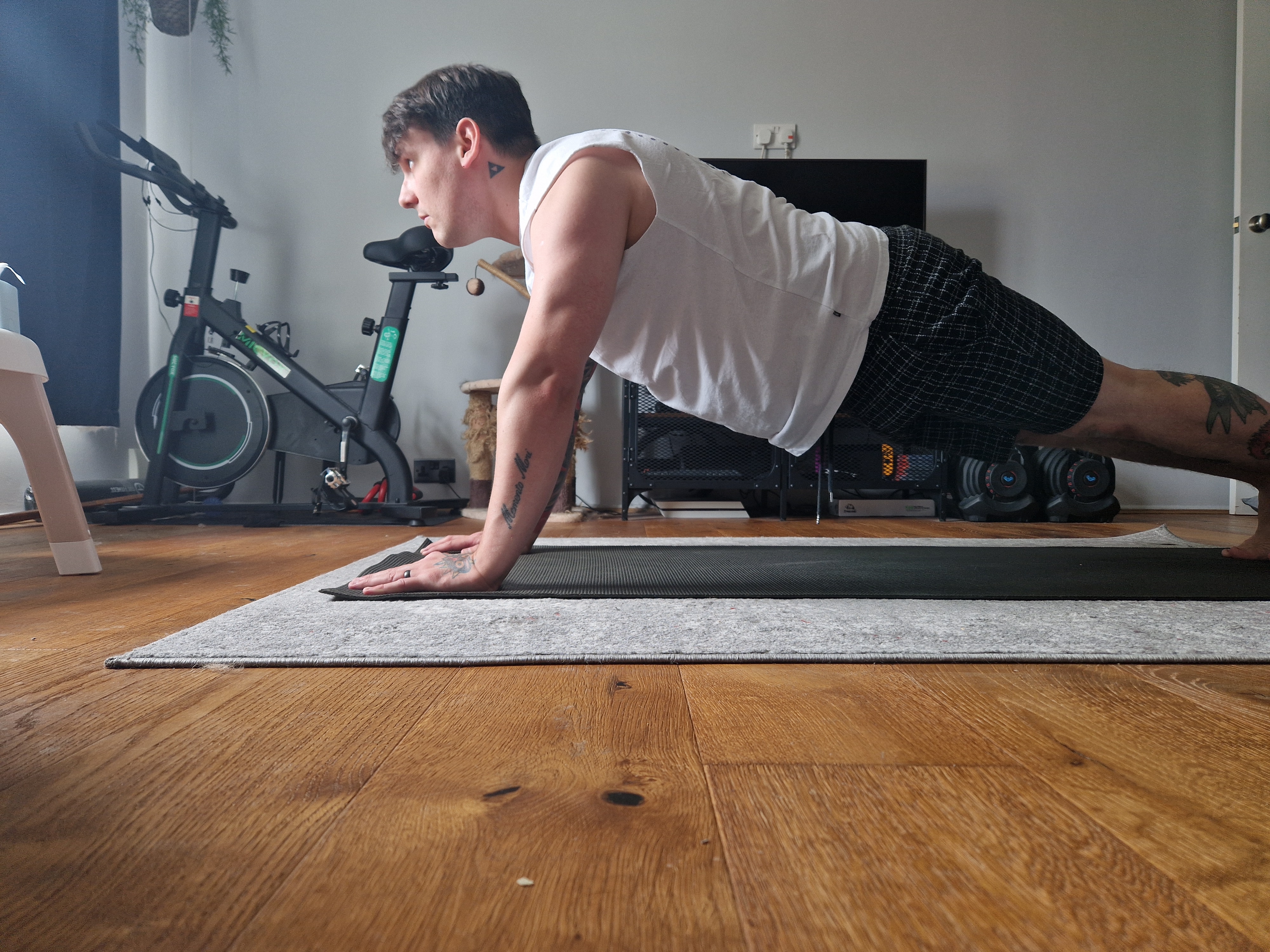Four surprising benefits of the plank push-up, according to a personal trainer
Our PT tried this hardcore plank variation every day for a week

Plank push-ups, otherwise known as plank get-ups, are one of those exercises that people forget. I say this as a personal trainer who forgot they exist because I tend to train my core more via other exercises, whether that’s horrible variations of squats, doing deadlifts, or just as a lovely side effect while practicing martial arts.
It’s not an exercise that will feature in many people’s workout plans. They might occasionally appear on some of the guided content on the best fitness apps like Fitbit Premium or Apple Fitness Plus: Not because it’s terrible, but because, for most people, just doing the plank in the first place is a big challenge. However, as people progress further into their exercise journeys, especially those who end up flirting with calisthenics, it’s an exercise that should probably feature more.
It’s one of those movements that activate a few more muscles than you might realize. While a standard plank will light up everything in your core and hit your shoulders a little, you just get more out of a plank push-up. In fact, let me break down four key things I learned about the plank push-up, not just from this week, but in my time as a fitness professional.
How to do a plank push-up:
1. It hits more muscle groups
One of the biggest upgrades that the plank push-up offers over the traditional plank, is the swaying. That may sound odd, but with the plank being a static exercise, it doesn’t really mimic many of the things we do in real life. In fact, I’d be willing to bet that you rarely find yourself in the same position planking puts you in during everyday life. Unless you plank professionally and stream it on Twitch, in which case more power to you.
In real life, and in most sports and exercises, you’re doing things in motion. Getting up from the floor after being jumped on by your kids is something that you need actual strength and mobility to do. These things aren’t really offered by a plank, but pushing yourself up from a plank, the way it sways your body and hits your obliques a bit more, and the extra focus on your shoulders, arms, back, and chest, are all things that the plank get-up offers over the standard plank.
2. It’s ideal for a warm-up or cool down
While traditional planking does hit the shoulders to a degree, it’s not much of a range. The plank push-up offers actual movement, and as such, you’ll be working more of your range of motion too. It also means you’ll be getting small gains on your triceps, which makes the plank get-up an excellent way to either warm those muscles up, or to end a focused push or chest session.
I personally prefer it at the end of a workout for one main reason: I really love burnout sets. ‘Burn sets’ or ‘burnout sets’ are when you do an exercise at the end of a full workout, or a specific big compound movement, say the bench press, but with substantially light weights, or just your bodyweight.
Sign up for breaking news, reviews, opinion, top tech deals, and more.
Doing a sustained set of plank push-ups until you physically can’t do them anymore is an excellent way to truly exhaust your upper body.

Plank push-up step #1

Plank push-up step #2

Plank push-up step #3
3. It’s great cardio
Plank push-ups don’t just have to be for those looking to strengthen or build muscles though. You can, in fact, use them as part of a cardio routine too. While doing forty minutes of plank get-ups would undoubtedly up that heart rate, there’s a more efficient way of using this exercise.
I’d recommend slotting them in alongside other exercises in a HIIT workout. I love the Tabata timing myself, which I actually wrote about last year in this guide to HIIT training. Doing plank get-ups amongst floor runs, mountain climbers, and burpees is a surefire way to make you hate me for introducing you to Tabata training. I’d say sorry, but we all know I wouldn’t mean it. Not every cardio session means lacing up your best running shoes.
4. It’ll give you better posture
This benefit is one that is offered by many core exercises. The motions you’ll use during the exercise will add substantial strength and suppleness to your lower back, which will, in turn, help your posture.
If you, like me, spend a fair bit of time on a computer, then your posture is likely something that’s suffered. Anything that helps your posture is going to help you un-Gollum your spinal column, and that’s always worth embracing.
The big question: Will I keep it up?
There’s no way I’m going to keep doing any one exercise every single day.Rest days are absolutely integral to your overall health, and to see actual benefits from the workouts you’re doing. Not only that, but with a workout schedule that involves weight training, calisthenics, martial arts, and staying up all hours of the night with my young son, it’s not realistic.
However, plank push-ups should, and will, feature in my workouts going forwards. I like to change up my workouts fairly often, and I abandoned specific routines a long time ago because, again, kids don’t sleep.
Plank push-ups work enough muscles that they’re more efficient than a lot of other motions, and they’re also something that makes my kids laugh. Both of these things are essential to making them a long-term commitment, and so I’ll be doing these a couple of times a week, probably alongside other full-body calisthenics workouts, or weird yoga bits using one of our best yoga mat entries.

Jason is a qualified personal trainer who now writes for a living across fitness, tech, and gaming. He does most of his workouts at home with a focus on weight lifting and martial arts, and is also constantly figuring out ways of exercising that somehow keep his daughter entertained at the same time.